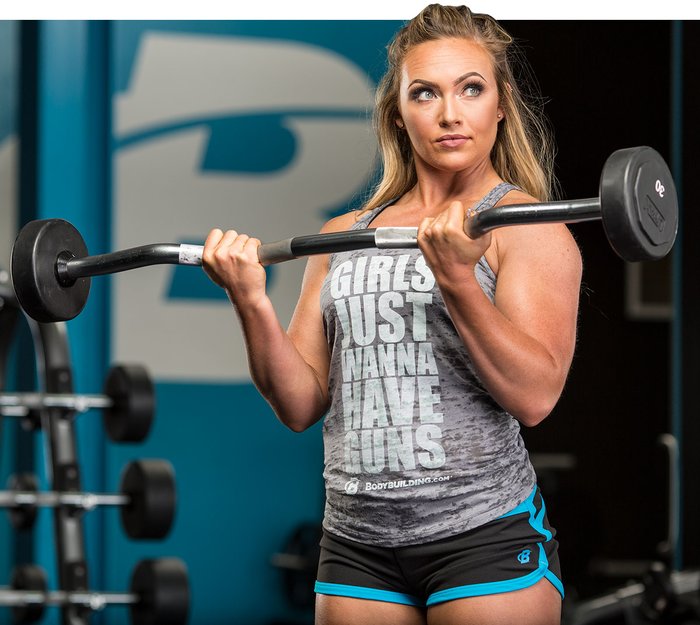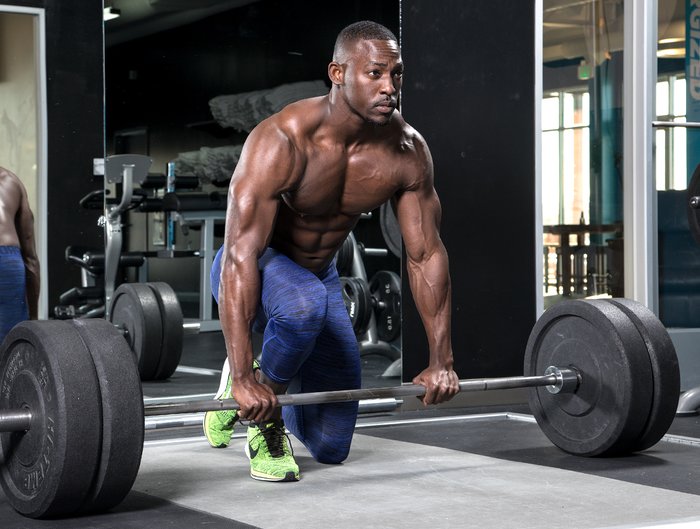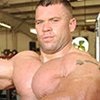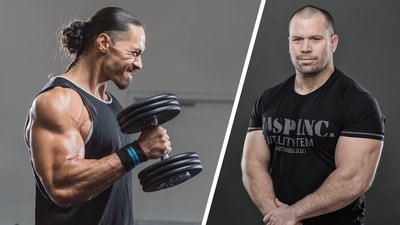Q: I'm still trying to figure out which came first, the chicken or the egg. In the meantime, I've been racking my brain to decide whether I should start my workouts with big weight and low reps, or little weight and high reps. Super Strong Guy, is there a correct order?
I'm puzzled by the chicken/egg thing, too, so I just eat them both and call it good.
As far as the proper order on lifts goes, it depends on your goal. If you want to increase strength or size, do your heaviest weight and lower reps after warming up, when you have the most energy. If you want to build endurance, start with low weights and high reps.
Most people follow the traditional pyramid-style workout in which you do high reps of light weights. But if you're after size and strength, you need to turn that pyramid upside down. Not only will going heavy first help you get stronger, but it will also help you get bigger. You'll even improve muscle endurance just by working out.

Building Size Versus Building Strength
The difference between going heavy first for strength or for size are subtle. Here are examples of similar versions of the same basic workout, each with a different goal in mind:
Reverse-Pyramid Bench Press Strength Workout
- Warm-up
- Set 1: 3 reps at 90% of one-rep max (1RM)
- Set 2: 3 reps at 85% of 1RM
- Sets 3-5: 3 reps each at 75% of 1RM
Reverse-Pyramid Bench Press Size Workout
- Warm-up
- Set 1: 5 reps at 85% of 1RM
- Set 2: 8 reps at 80% of 1RM
- Set 3: Rep to fatigue at 75% of 1RM
- Set 4: Rep to fatigue at 65% of 1RM
As you can see, building strength is a matter of going a little heavier and doing fewer reps. When you're working for size, you're still lifting plenty of weight—just not quite so much, and for more reps. But for either one, you're going heavy.
PAP Effect
The reverse-pyramid approach takes advantage of your starting energy. It also triggers what's called post-activation potentiation (PAP). Here's how the late Soviet sports-scientist Yuri Verkhoshansky once explained PAP: "When you lift a can of water after performing a 3-5-rep max followed by a light explosive set, it feels to your nervous system like you're lifting a can that's only half full." In other words, the PAP effect makes weight feel lighter so you can move more weight with more force for more repetitions.
Safety and Technique
Going heavy first is safer, too. A lot of hardcore lifters downplay the importance of safety, but you won't be making any gains in size or strength if you're a regular patient at the local orthopedic surgeon. Heavy compound movements are neurologically very demanding. As such, they are safest to perform when your attention and energy are at their peak. The same holds true for building strength, when you're doing the same big lift repeatedly the exact same way.
Whether its strength or size you're after, you're going to be moving big weights. Doing them first keeps you safe by enabling you to go big before fatigue can make you lift sloppy.

Psychology
There's also a psychological advantage to this approach. After all, it's a lot easier to lift less weight than it is to lift more. With the reverse pyramid approach, you do the most demanding work first and are more mentally prepared to grind out the last reps.
Final Thoughts
For strength and size, it is very important for both physiological and psychological reasons to do your heavy weight and lower reps first. So next time your lifting partner suggests the pyramid, oblige, then flip it upside down.

